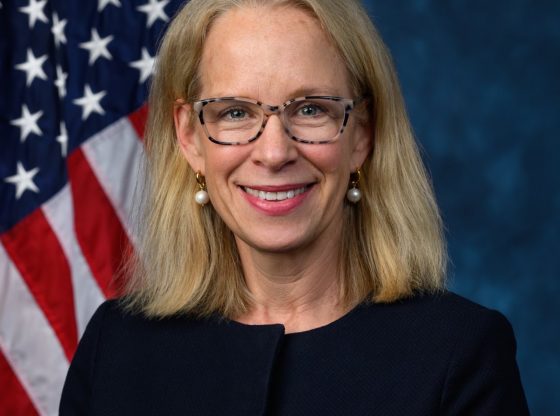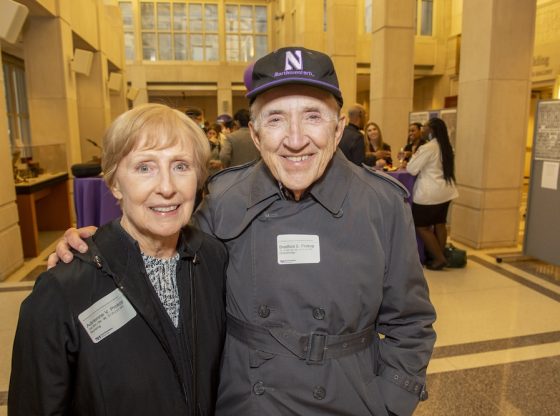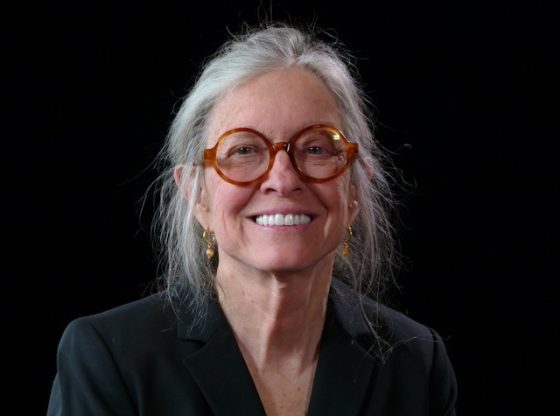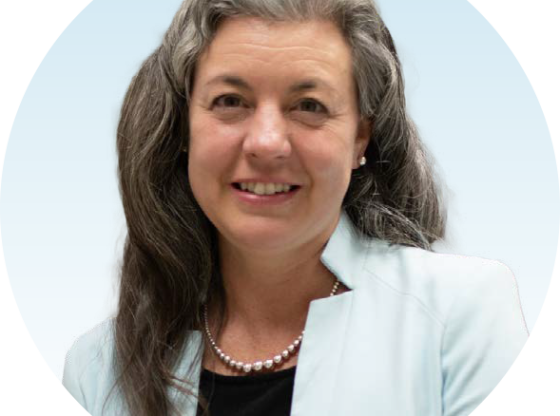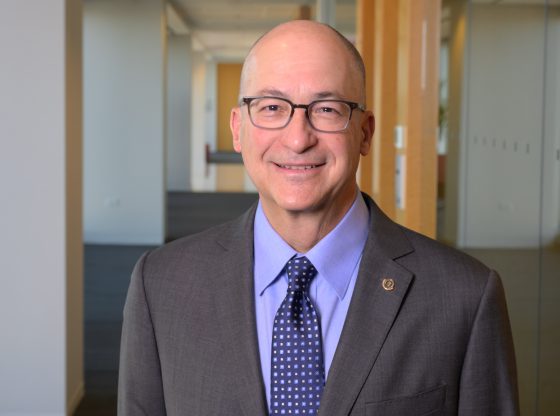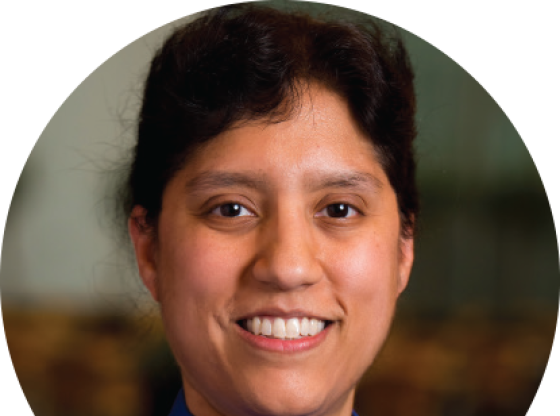A Half-Century of Fixing Smiles
Arthur Curtis, ’71 MD, ’73 ’76 GME, has built a career on spreading happiness one smile at a time.
By Ed Finkel
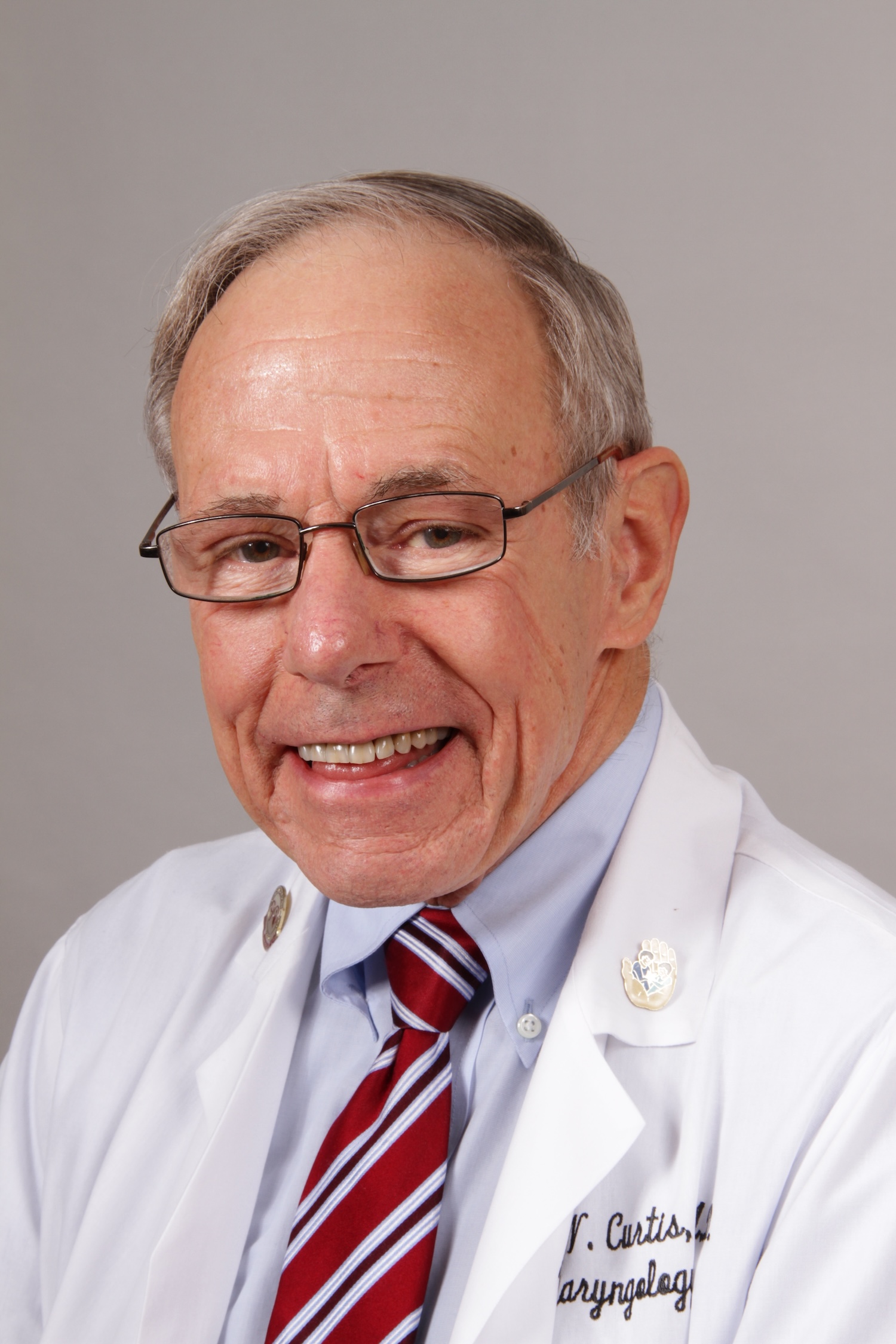
Arthur Curtis, ’71 MD, ’73 ’76 GME, appears completely in his element traversing the bustling halls of Shriners Children’s Chicago. As he walks the halls jovially greeting medical staff and patients and their families, it’s clear that Shriners Children’s is a home for the otolaryngologist, who has spent the past 22 years on the hospital’s cleft palate team.
“Shriners is a happy place. People know each other and greet you when they see you,” he said. “I like science, but I’m a people person. I don’t think I could have picked a better field. I just enjoy trying to be helpful to people, hearing their stories, and figuring out what’s wrong.”
A native of nearby Park Ridge, Illinois, Curtis bled Northwestern purple from an early age due to his family history: his father, Norman, initially enrolled as a theater major, was the stage manager of the first Northwestern University Waa-Mu Show and later received a CPA from Northwestern University’s night school; his uncle Arthur graduated from the School of Commerce (now the Kellogg School of Management); and his older brother, David, graduated from the McCormick School of Engineering.
Following in their footsteps, Curtis enrolled in the then-six-year (later changed to seven) Honors Program in Medical Education (HPME), playing trombone in the Northwestern Marching Band, and completing a surgery internship, a year of general surgery, and three years of ENT. Curtis didn’t envision himself as a surgeon at first. “The stereotype of the surgeon at that time was a tall, handsome former star athlete,” he explained. “But ENT seemed ‘nerdier’ given the focus on hearing and speech, and I like the intricate anatomy of the head and neck.”
After residency and two years in the U.S. Army, he returned to Chicago and became affiliated with what’s now Northwestern Medicine along with other institutions, including Cook County Hospital and Illinois Masonic, as well as a related institution called Union Health Service, and what’s now the Ann & Robert H. Lurie Children’s Hospital of Chicago. Upon returning to Chicago, Curtis spent three years working part time at Cook County Hospital teaching otolaryngology residents mostly from Northwestern.
Curtis also had a private practice in downtown Chicago where he treated famous patients like Ann Landers, White Sox co-owner Eddie Einhorn, and Eli Schulman of Eli’s Cheesecake. “When I started, you were expected to do all of ENT: cancer operations where you took out part of the jaw and the voice box, microscopic ear surgery, facial trauma, facial cosmetic surgery, and nasal and sinus surgery — the whole caboodle,” he said. “But it’s all become much more sub-specialized.”
Cleft palate teams with plastic surgeons, prosthodontists, oral surgeons, speech language pathologists, orthodontists, psychologists, pediatric dentists, audiologists, and ENTs are the recognized best practice for care, Curtis explains. The ENT procedure called myringotomies and tubes help guard against the chronic buildup of fluid in the middle ear, which is more common in cleft palate patients and causes temporary hearing loss—potentially delaying language learning and detracting from school performance.
Every member of the team at Shriners Children’s specialized cleft/craniofacial program sees each patient. Afterward the team meets to discuss a coordinated plan for each patient, and then again to explain their recommendations to the patient and family. Shriners Chicago took over this operation from the Northwestern University Dental School, which closed in 2001, after it built out the needed space and facilities and received grants from the century-old Shriners International fraternal organization.
Curtis believes he’s reaped a lifetime of rewards from having attended Feinberg, starting with meeting his wife, Judy, who received a nursing diploma from Northwestern and later became a certified financial planner and the business manager for his private practice. “She knows my medical school friends, and we’ve maintained good friendships,” he said. “And we enjoy going to the reunions and reconnecting with everyone.”
In addition, almost the entire Curtis family still lives in Evanston and continues to carry on the tradition of Northwestern pride. “We do all sorts of things at and with Northwestern — alumni trips, theater, concerts, art exhibits, football games, my grandson’s swim team, and the yearly A Day With Northwestern talks,” he said. “I have played and marched at Northwestern home-coming football games with NUMBALUMS [the Northwestern University Marching and Band Alumni] dozens of times. I am also a member of the Half Century Clubs for both the Northwestern Alumni Association and the Medical Alumni Association.”
And although none of Curtis’ three children attended Northwestern, he hopes his grandson, a junior at Evanston Township High School, will continue the family tradition of being a Northwestern Wildcat. “We’ve been preparing him to go to Northwestern,” Curtis said. “Hopefully it works out, and he becomes a Northwestern alum someday.”

